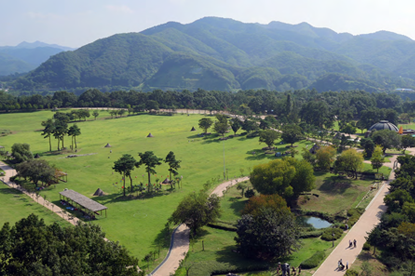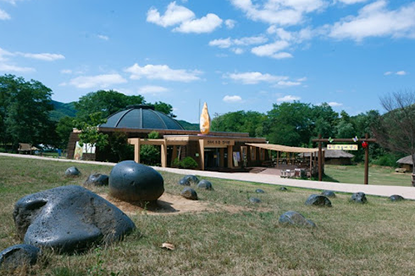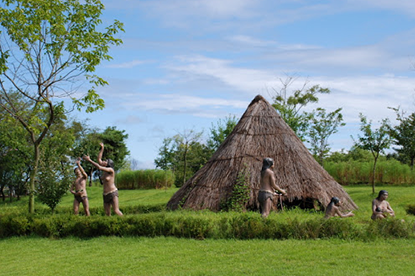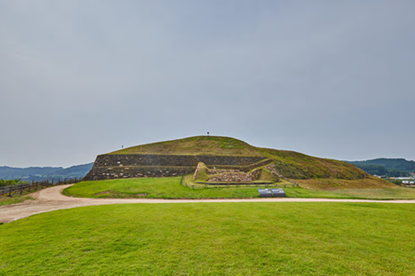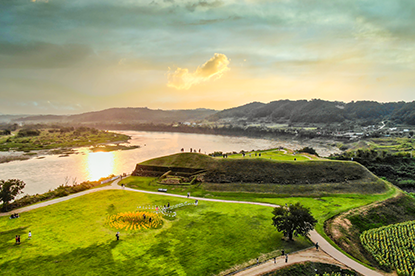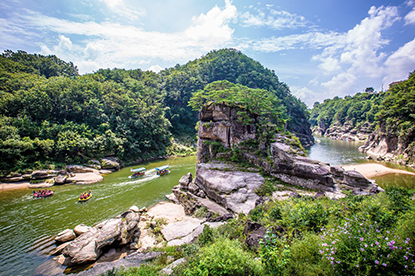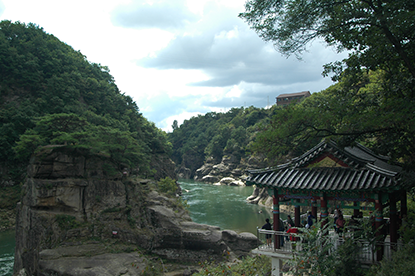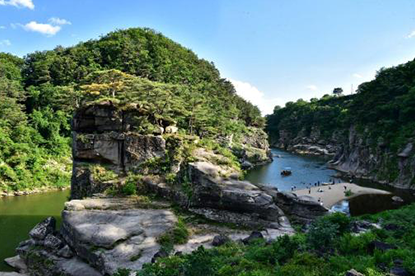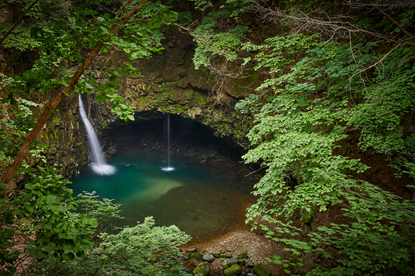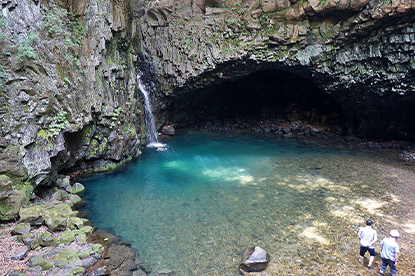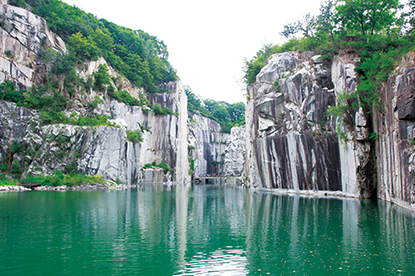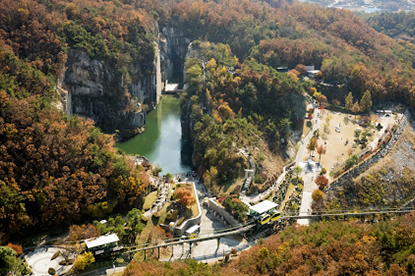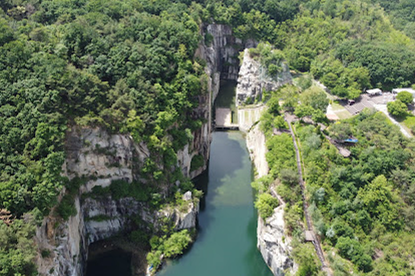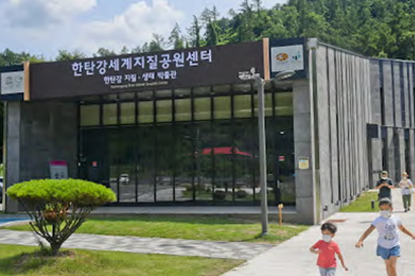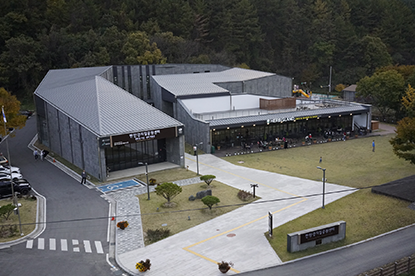Korean Heritage Passport Tour
- Incheon International Airport PR Center (Traveler Center)
- Gaya Culture Route
- Gwandong Pungryu Era Route
- Baekje Antiquity Route
- Korean Temple Monasteries (Sansa) Route
- Korean Confucian Academy Route
- Prehistoric Landscape Route
- Mythic Landscape Route
- Folk Music Route
- Royalty Route
- Golden Era Route
Yeoncheon, Cheorwon, Pocheon - Our time on earth
Prehistoric Landscape Route is where you can learn the story of human civilizations on our planet. It features several Korean Heritage sites where you can learn about prehistoric culture. In particular, Yeoncheon, where the rare “Acheulean hand ax” was discovered for the first time in East Asia, brought about a major turnaround in the world's Paleolithic research. Hantangang River and Imjingang River have rock formations and geological features that existed before lava flows in the local area, as well as gorges with columnar joints, eroded caves, and waterfalls formed by volcanic eruptions. Overall, the landscape creates a beautiful topography and landscapes. From the Paleolithic and Neolithic Ages to the Joseon Dynasty, the Prehistoric Landscape Route gives you a glimpse into cultural resources that tell their own stories of people who lived near Hantangang River, and a chance to immerse yourself in the natural resources at Hantangang River National Geopark, which has been selected as a UNESCO Global Geopark.
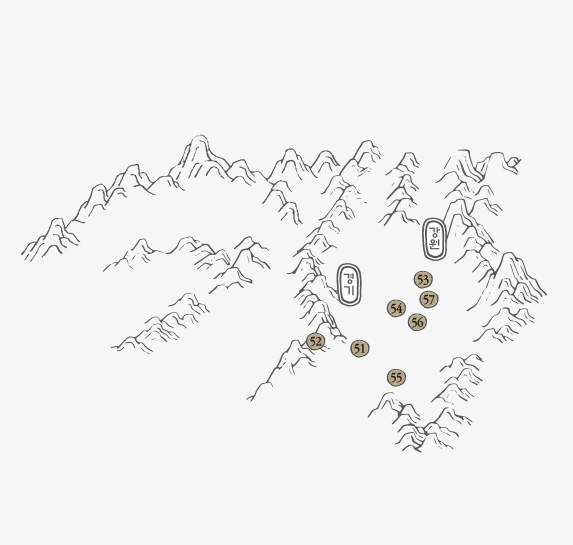
Prehistoric Landscape Route If you plan on departing from the Seoul/Gyeonggi-do region by subway or bus (intercity bus), you will need to transfer multiple times. You will also need to walk for long distances in Yeoncheon, Cheorwon, and Pocheon, so we recommend driving your own car or renting a car rather than using public transportation. If you choose to rent a car, we recommend picking it up at Dongducheon, Guri, and Uijungbu, which will bring you the closest to the Prehistoric Landscape Route by public transportation.
Flavors of Cheorwon, Yeoncheon, and Pocheon might just leave a lasting memory
-
Makguksu
Makguksu is the signature dish of Gangwon-do. Buckwheat noodles eaten in Gangwon-do and some parts of Gyeonggi-do are called Makguksu. However, instead of calling them buckwheat noodles, they are called Makguksu noodles, which means “noodles that are made and eaten quickly.”
-
Cheorwon Odae Rice
Cheorwon Odae Rice is harvested in natural, pollution-free rice paddies using clean water flowing from the demilitarized zone, which has been protected and preserved since the armistice that put the Korean War on hold. The refreshing winds at an altitude of 250m above sea level, fertile soil, and a clean natural environment create the perfect environment to grow delicious and nourishing rice.
Korean Heritage festivals in Cheorwon, Yeoncheon, and Pocheon
-
Yeoncheon Jeongok-ri Paleolithic Festival
The Yeoncheon Jeongok-ri Paleolithic Festival is the world's first immersive festival for families where you can learn and enjoy Paleolithic and prehistoric culture with learning programs, games, and other activities. Each year, the Festival gets under way with a different slogan, but the main theme - “The History of Jeongok-ri” - remains the same. Archaeologists believe Jeongok-ri was home to the first people to settle in the Korean peninsular, which makes it the perfect place for the world's first cultural event focused specifically on the Paleolithic period.
For more details, please check the festival’s official website below.
Website https://www.goosukgi.com/
-
Hwagang Daseulgi Festival
A tourism festival for families hosted in Hwagang, Gimhwa-eup, Cheorwon-gun, Gangwon-do every year since 2007.
For more details, please check the festival’s official website below.
Website www.cwgfestival.com
-
Herb Island Lighting Festival
Light Festival is hosted annually from November to April of the following year at Herb Island in Samjeong-ri, Sinbuk-myeon, Pocheon-si, Gyeonggi-do.
For more details, please check the festival’s official website below.
Website www.herbisland.co.kr
- Jeongok-ri Site, Yeoncheon
- Horogoru Fortress, Yeoncheon
- Goseokjeong, Cheorwon
- Bidulginang Falls, Pocheon
- Pocheon Art Valley
- Hantangang River Geopark Center
- Hwajeongyeon, Pocheon
Hwajeongyeon in Pocheon, a hidden gem of Hantangang River
-
Address
San 115-2, Jail-ri, Yeongbuk-myeon, Pocheon-si,
Gyeonggi-do -
Inquiries
031-538-3025
-
Stamp
Tourist information center at Hwajeongyeon
-
Directions
Take bus no. 3001-1 at the Dong Seoul Bus Terminal → Get off at Sajeong-ri/Sadanap bus stop → Walk for 48 minutes or take a taxi for 6 minutes
Hwajeongyeon, one of the “Eight Scenic Views of Yeongpyeong,” is a 13-meter-tall granite rock rising above a pond. It is called “Hwajeongyeon” because its shape looks like a pile of hay in the middle of a pond. The deep pond created by Hantangang River, the dark-colored basalt cliffs, and the brightly colored rock pillars blend in together, creating one of the best topographical landscapes along the Hantangang River. Hwajeongyeon is an invaluable topographical resource as it allows you to learn about a variety of different topographical elements. Moreover, other topographical features, including basalt columnar joints, granite bedrock, sand, and gravel carried downstream by Hantangang River, add even more value to Hwajeongyeon as a natural resource. Since ancient times, records, including the Annals of the Joseon Dynasty, show that Hwajeongyeon was used for rainmaking rituals. Also, Hwajeongyeon has been featured in writings by Park Se-dang, Park Soon, Hong Yang-ho, Yi Hang-ro, and Yi Byeong-yeon, as well as real scenery landscape paintings by Jeong Seon, Yi Yoon-yeong, and Jeong Soo-yeong, which is why Hwajeongyeon holds significant value as a historical and cultural resource as well. In recognition of its value, Hwajeongyeon has been designated as a national Korean Heritage site of scenic beauty by the Korean government.

Provided by the Korea Korean Heritage Foundation
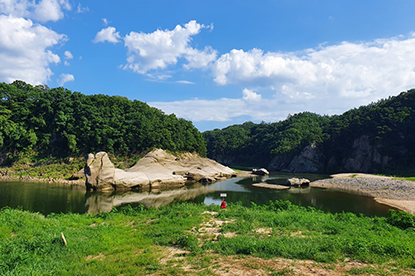
Provided by the Korea Korean Heritage Foundation
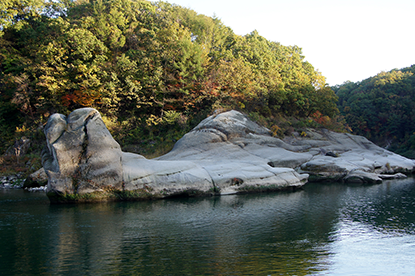
Provided by the Korea Korean Heritage Foundation









